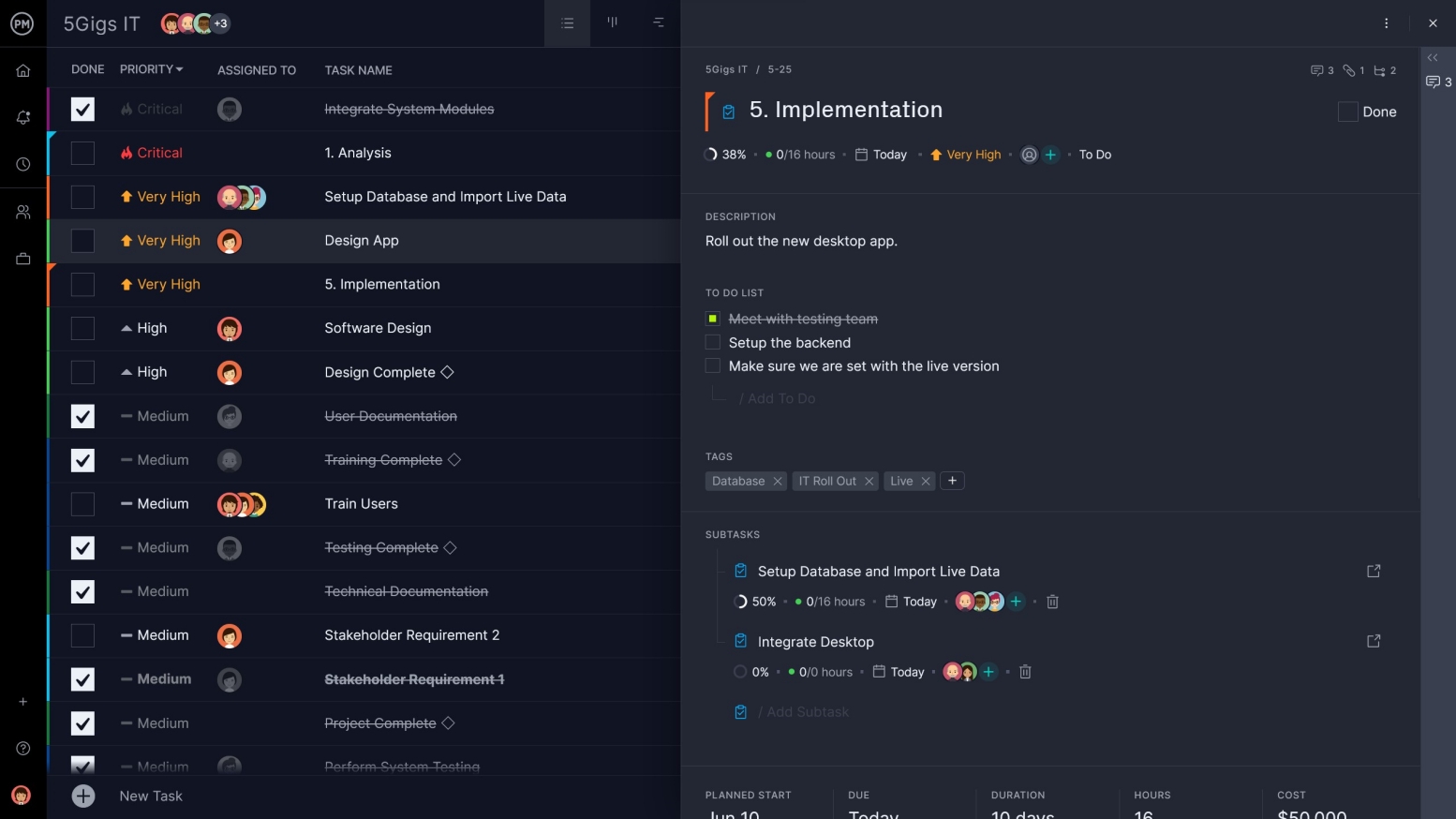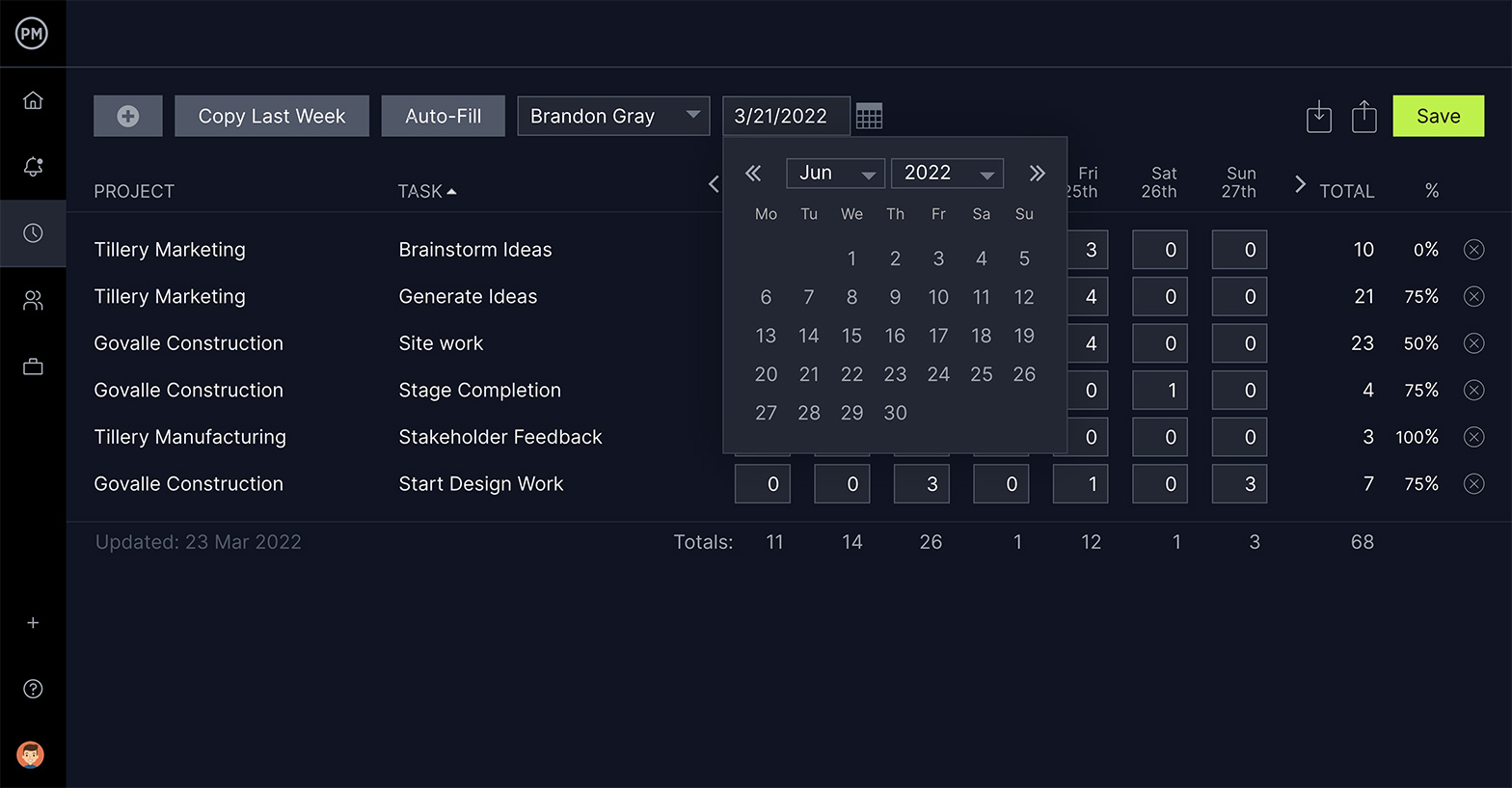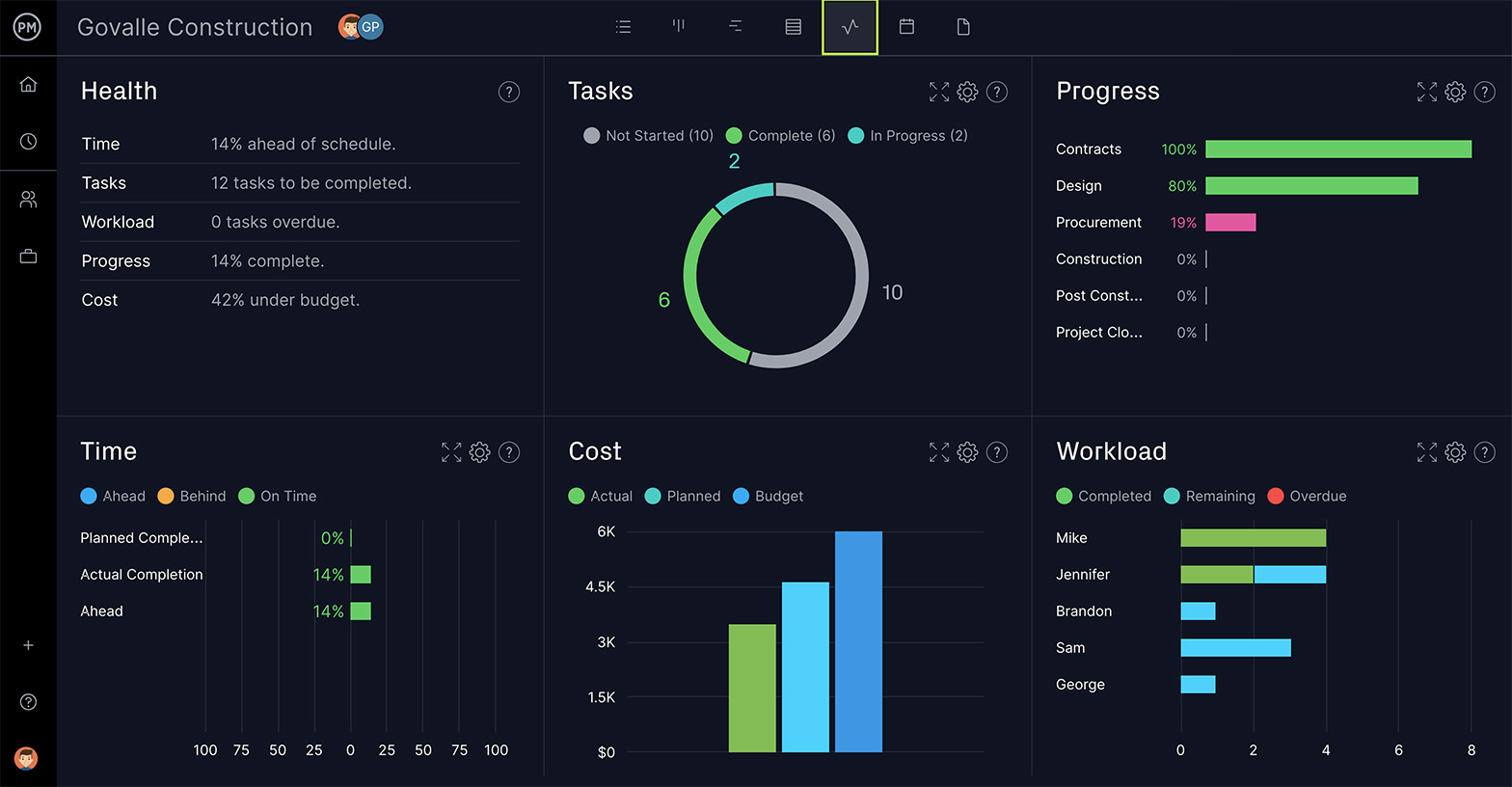Asana is one of the most popular tools for teams looking to organize their work—but what is Asana, exactly? Is it a task management software or a full project management solution? The answer lies somewhere in between.
Asana helps teams plan, assign, and track tasks while also managing complex projects through timelines, workflows, and dashboards. It’s designed to improve collaboration, eliminate confusion, and keep everyone on the same page. In this guide, we’ll explain what Asana is, how it works, its key features, and what pricing options are available for teams of all sizes.
What Is Asana?
Asana is a task management tool founded in 2008 by former Facebook executives. They named their tool after a word in Sanskrit, in reference to a yoga position. Just as yoga improves your body and mind, the aim of Asana is to help you work better through streamlined communication.
While communication is the bedrock of any project, it has to hold up a complex structure to be successful. Asana falls short of what a project manager would want from a tool but that doesn’t mean it’s not worth exploring further.
Asana organizes teams and tries to help them manage their work. The software allows teams to create projects, assign tasks with deadlines and communication between team members. It shares basic features with many other project management apps.
There are also tools that allow users to report on progress and performance, add attachments and use calendars, among other things. The software can be integrated with other apps, including Gmail, Slack, Microsoft Outlook, Dropbox, Google Drive and Zapier.
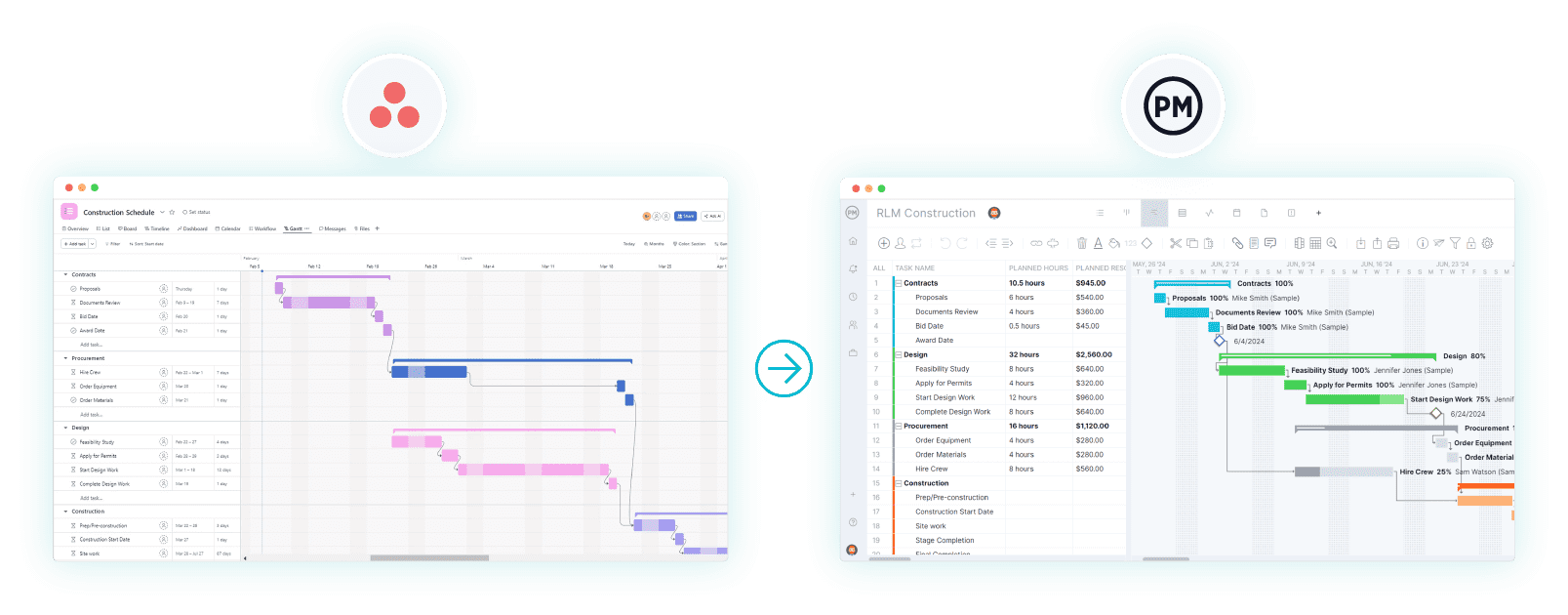

Asana Pricing Plans
Asana offers four pricing plans. Each has its pros and cons, but there is a low bar for entry for the casual users and more advanced plans for those who need to have the full suite of features:
- Personal: A limited free plan.
- Starter: After a 30-day free trial, it’s $10.99 per user, per month when billed annually ($13.49 when billed monthly).
- Advanced: This plan is $24.99 per user, per month when billed annually ($30.49 when billed monthly).
- Enterprise: For this tier, you must contact their sales department.
What is Asana? It’s a straightforward task management platform that offers list, board, timeline and calendar views, along with task assignments, priorities, labels, dependencies and recurring tasks. While it’s great for organizing daily work and team collaboration, Asana’s project management depth, reporting flexibility and customization options are still limited compared to more advanced platforms.
With ProjectManager, teams gain multiple project views—Gantt, list, board, calendar and sheet—plus task linking, custom fields, and real-time workload tracking. It also enables cost management, baseline setting, and dynamic dashboards without switching between tools. Powered by AI Project Insights, ProjectManager helps identify risks, balance workloads and keep schedules on track. Try ProjectManager for free today and experience professional-grade project management capabilities.
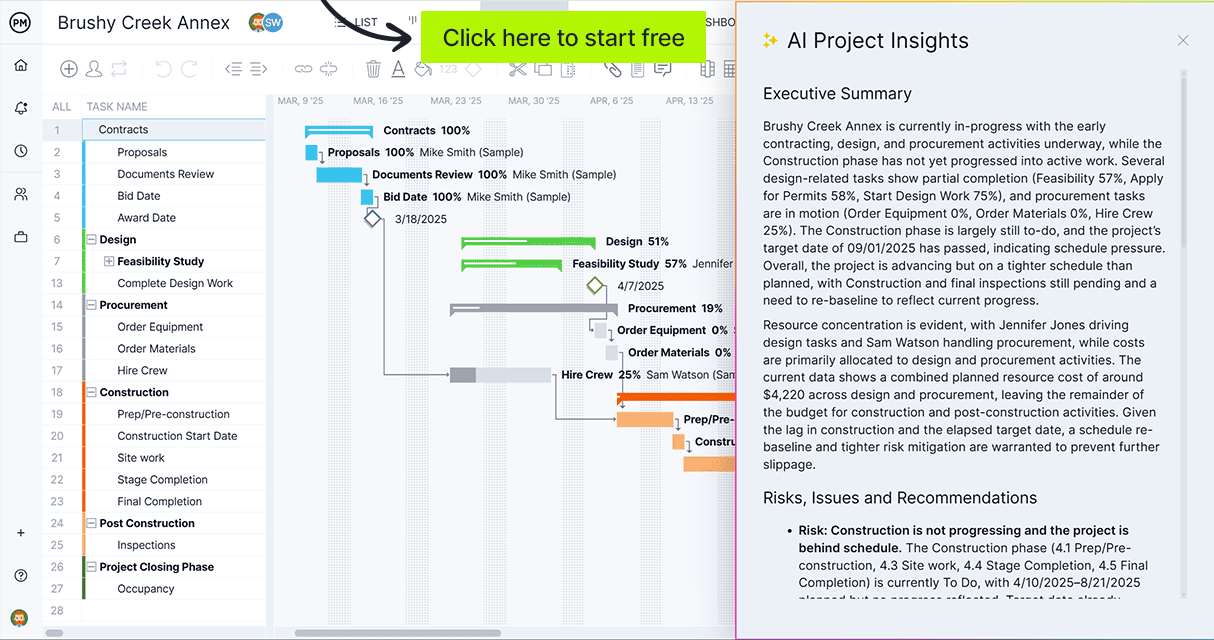

Asana Views and Tools
Asana offers several views and tools that help teams organize and visualize their work, but most are built for task-level management rather than full project or portfolio control. While these views improve visibility and collaboration, they lack the advanced scheduling, reporting, and resource management capabilities found in more comprehensive project management software solutions. It’s also important to note that the availability of these features depends on the pricing plan you choose.
- List View: A simple spreadsheet-style layout for organizing and tracking tasks. It’s practical for basic task management but lacks the depth and automation expected from advanced project management tools.
- Board View: Uses a Kanban-style layout that’s great for visualizing workflows, yet it feels limited for managing complex dependencies or large, multi-team projects.
- Timeline View: A lightweight Gantt-style view that helps visualize schedules but doesn’t offer the advanced scheduling controls found in more robust project management software.
- Calendar View: Displays tasks by due date for easier planning, though it’s mostly suited for smaller teams or short-term task coordination.
- Dashboard View: Offers basic visual reports and charts, but its analytics are minimal and can’t match the depth of dedicated reporting tools or enterprise platforms.
- Workload View: Shows how tasks are distributed among team members, though it oversimplifies resource management and lacks advanced capacity or skill-based planning options.
- Messages View: Provides a built-in communication space, but it’s more of a convenience feature than a true collaboration hub for complex team discussions.
- Files View: Gathers all attachments in one place, which is helpful for quick access, but version control and document management features are limited.
- Goals View: Helps track objectives and align tasks to broader goals, though it’s largely a surface-level feature without strategic portfolio planning depth.
- Portfolios View: Gives a general overview of multiple projects, but its functionality is basic and doesn’t offer the robust portfolio controls found in enterprise-grade tools.
Asana Features
Asana includes a wide range of features designed to simplify task organization, communication and reporting. It works well for teams that need visibility and coordination, though most features—such as Gantt charts, reporting and workload tracking—are fairly basic compared to advanced project management software. Still, Asana provides a solid foundation for everyday task and team management.
- Gantt chart: Asana’s Gantt chart has very limited project planning, scheduling and tracking features.
- Task Management: Organize work in shared projects viewed as lists or kanban boards. Projects can be broken up into tasks and subtasks and viewed on a timeline. Attachments can be added, dependencies identified and fields customized.
- Communication: Add comments to tasks and tag other team members. Comments can also be added to images and PDFs, which become tasks that can be tracked. There are team pages that collect the team’s projects and profiles on one page and everyone can comment and drop announcements.
- Project Views: Get multiple views of your project, including a task list, which is a prioritized to-do list. There’s also a list view, which is a grid that can be filtered and formatted. The workload view helps manage resources. The calendar view shows an overview of the work with important dates.
- Reporting: Use the tool to set, track and manage your project goals, set milestones to break up bigger projects into more manageable parts and motivate your team. Get status updates to monitor the project and share with stakeholders. A dashboard can be customized to show real-time data in charts.
- Team Management: Organize your project teams and keep team members connected with shared calendars and comments, while also controlling privacy settings as needed. Add vendors, contractors and other patterns into the communication channel to keep them in the loop.
What Is Asana Used For?
Asana is used to organize, assign, and track work across teams. It’s primarily a task management tool, helping users break projects into smaller steps, set priorities, and monitor progress. Many teams use it for marketing campaigns, product launches, and team planning because it simplifies communication and accountability.
However, while Asana does include timelines, dashboards, and workload views, these features remain fairly lightweight compared to full-scale project management software. It’s best suited for small to mid-sized teams that need visibility and coordination rather than deep scheduling, budgeting, or resource forecasting. In short, Asana helps teams stay organized and meet deadlines efficiently—but those managing complex, multi-project portfolios might find its planning and reporting capabilities somewhat limited.
Pros and Cons of Asana
Does the tool really help manage projects, tasks and teams through every phase of a project’s life cycle? Let’s take a look at what Asana does well and where it falls short:
Pros of Asana
- Free Version: Asana has a free version, which is a plus, except when you start to use it. The tool that you get is barebones and hardly useful for any sort of professional.
- Collaboration: The software does connect teams to help them collaborate. The workspace is a window onto all the tasks and projects that are currently active. This provides some transparency but falls short of a truly collaborative experience.
- Integration: It’s a bit of a backhanded compliment, but at least Asana is able to begin filling the holes in its features by partnering with third-party apps that can give the software a bigger range. While it’s not as good as having all the features you need under the hood, it’s something.
- Prioritization: Knowing what you have to do and when is key to running a successful project. Asana helps you prioritize work. That boosts productivity.
- Security: Asana keeps your data safe with secure storage.
Cons of Asana
- No True Gantt: While the tool has a Gantt-like timeline, it has nowhere near the power of what a real Gantt chart can do. This is a major omission, as the Gantt chart is a foundational project management tool. It is used for planning and scheduling and is often where the project manager lives for the duration of the project.
- Hard to Use: Another problem with Asana is that it’s a steep learning curve for new users. Its interface isn’t user-friendly and most new users will have to carve out a substantial amount of time to get training before they can be onboarded.
- Lacks Time Tracking: There are no timesheets or any other time-tracking features, which is a dangerous deficit if you’re looking to keep a project on schedule. Asana can track projects and tasks, but not time the task’s assignees spend working on them. This is a problem, not only for tracking but billing clients.
- Can’t Handle Complexity: Asana seems to excel at simple projects, but once things get complicated, it becomes less easy to use. Big teams and projects crowd the page and make it difficult to scan important information or track tasks and team members. Speaking of tasks, they can only be assigned to one person. That might work on smaller projects, but often a task will be executed by more than one person and there’s no way to do this simply.
- Expensive: Even though the company offers a free version, most people will need more features to manage their projects. Once you start moving up into the paid subscription plans, things can get pricey fast. This is especially a problem if you’re a relatively small team. Basic features like start dates and dependencies aren’t available unless you pay for an expensive plan.
ProjectManager Is the Best Asana Alternative
It’s no contest. While Asana is a decent task management tool it falls woefully short of covering all the bases necessary to deliver a successful project. ProjectManager offers everything that Asana does in a user-friendly package and more. It gives your team dynamic collaborative tools to help them work better together.
The idea of running a project without a Gantt chart makes most project managers blanche. The timeline from Asana is just not going to cut it when it comes to what our tool does to help you organize all the disparate parts of your project.
Plan with our Gantt, which automatically calculates critical path and sets a baseline so you can compare planned versus actual progress. When you’re assigning, our real-time data shows you who on your team is available when which makes assigning tasks more efficient.
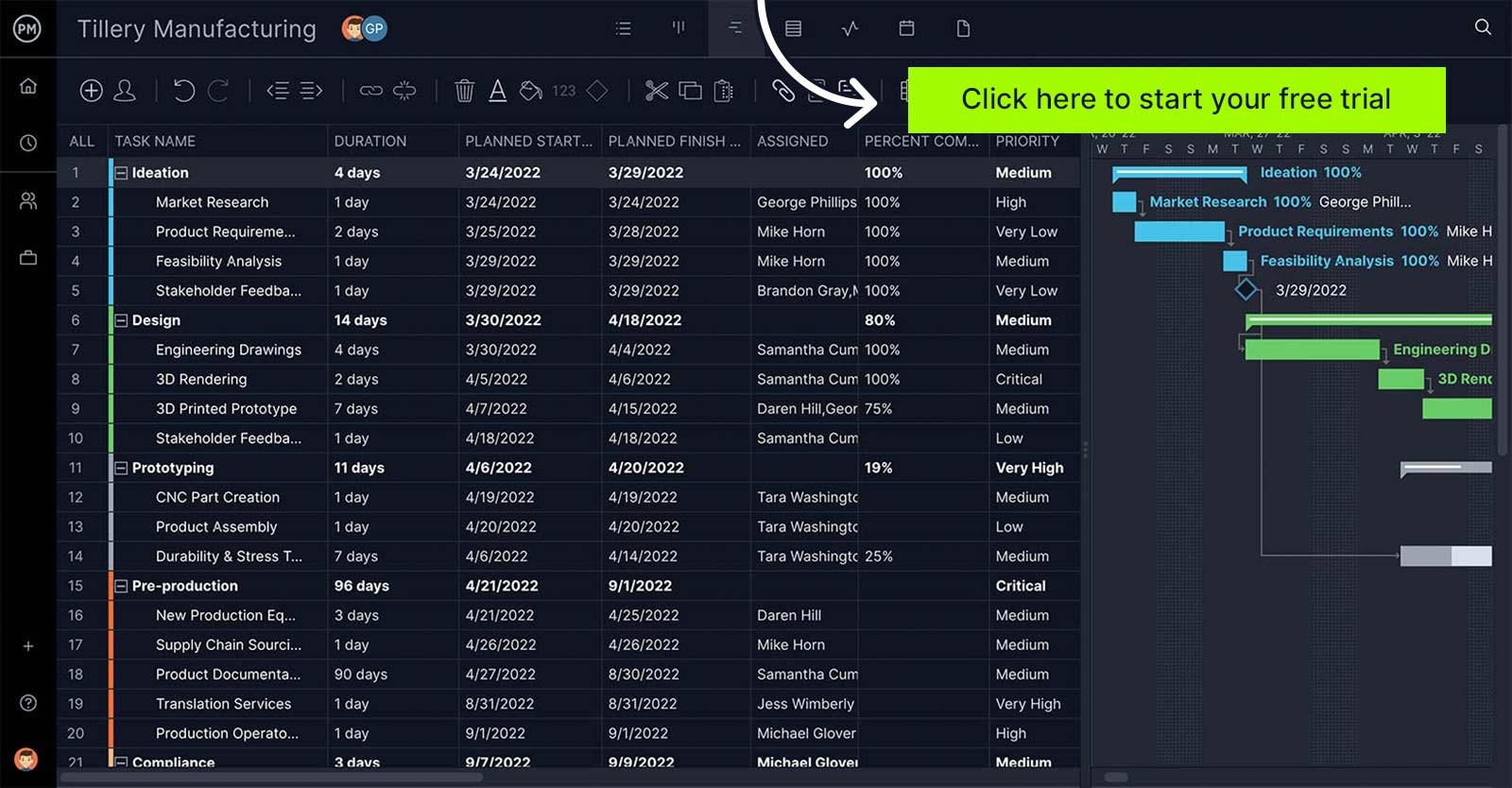

One of the biggest differences between Asana and ProjectManager is our robust task management features. While you’re stuck with only one assignee per task with Asana, you can assign as many as you want with our tool. We show all your tasks and subtasks in one place, allowing you to prioritize, add attachments, link dependencies and set durations without having to jump to an expensive pay plan.
Unlike Asana, you can track the time your team takes to complete their tasks with timesheets that do more than just streamline the payroll process. Timesheets can auto-populate repeated tasks and automatically add assigned tasks. Managers can use timesheets to monitor how many hours their team has spent working on their tasks. Then when the timesheet is approved it’s locked and secure.
Our software has one-click reports on timesheets for greater detail, but also project and portfolio status, workload, time, cost and much more. While the live dashboard gives you real-time data from a high-level view, our dashboard doesn’t have to be configured like Asana, so you save time. We can also export and import in multiple formats and switch between project views without losing any data.
If you want to learn more about our award-winning project management software, visit our homepage and view our full feature set. See why project managers have used our software to plan over 2,000,000 projects around the globe.
Related Content
ProjectManager is award-winning software that helps you better plan, execute and report on your project all in real-time so you make more informed decisions. Get transparency into the workflow, balance your resources for greater productivity and give teams the collaborative features they need to work better together. Try ProjectManager today for free.



